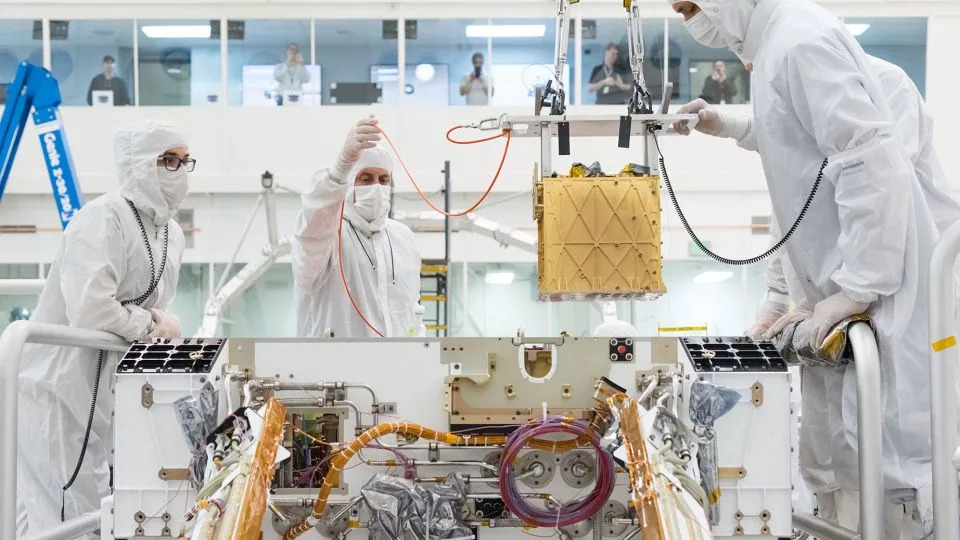Ashley Strickland, CNN
Thu, September 7, 2023
The first experiment to produce oxygen on another planet has come to an end on Mars after exceeding NASA’s initial goals and demonstrating capabilities that could help future astronauts explore the red planet.
The microwave-size device called MOXIE, or Mars Oxygen In-Situ Resource Utilization Experiment, is on the Perseverance rover.
The experiment kicked off more than two years ago, a few months after the rover landed on Mars. Since then, MOXIE has generated 122 grams of oxygen, equal to what a small dog breathes in 10 hours, according to NASA. The instrument works by converting some of Mars’ plentiful carbon dioxide into oxygen.
During the peak of its efficiency, MOXIE produced 12 grams of oxygen an hour at 98% purity or better, which is twice as much as NASA’s goals for the instrument. On August 7, MOXIE operated for the 16th and final time, having completed all its requirements.
“We’re proud to have supported a breakthrough technology like MOXIE that could turn local resources into useful products for future exploration missions,” said Trudy Kortes, director of technology demonstrations, Space Technology Mission Directorate at NASA headquarters, in a statement. “By proving this technology in real-world conditions, we’ve come one step closer to a future in which astronauts ‘live off the land’ on the Red Planet.”
MOXIE implications
The thin Martian atmosphere is 96% carbon dioxide, which isn’t much help to oxygen-breathing humans. MOXIE works by dividing up carbon dioxide molecules, which include one carbon atom and two oxygen atoms. It separates out the oxygen molecules and emits carbon monoxide as a waste product. As the gases move through the instrument, its system analyzes the purity and quantity of the oxygen.
Heat-tolerant materials, such as a coating of gold and aerogel, were used to make the instrument since this conversion process requires temperatures reaching 1,470 degrees Fahrenheit (798 degrees Celsius). These materials kept the heat from radiating out and damaging any aspect of the rover
.
Engineers installed MOXIE inside the chassis of the Perseverance rover in 2019. - NASA/JPL-Caltech
Something that can convert carbon dioxide into oxygen efficiently could help in more ways than one. Bigger and better versions of something such as MOXIE in the future could supply life support systems with breathable air and convert and store oxygen needed for rocket fuel used to launch on a return trip to Earth.
“MOXIE’s impressive performance shows that it is feasible to extract oxygen from Mars’ atmosphere — oxygen that could help supply breathable air or rocket propellant to future astronauts,” NASA Deputy Administrator Pam Melroy said in a statement. “Developing technologies that let us use resources on the Moon and Mars is critical to build a long-term lunar presence, create a robust lunar economy, and allow us to support an initial human exploration campaign to Mars.”
Transporting thousands of pounds of rocket propellant and oxygen on the initial trip from Earth to Mars would be incredibly difficult and expensive and would mean less room on the spacecraft for other necessities. Technology such as MOXIE could help astronauts essentially live off the land and utilize the resources from their surroundings.
Lessons learned from the small MOXIE experiment can now be used to create a full-scale system that includes an oxygen generator that can also liquefy and store the oxygen.
But the next major step in the process is to test other technologies on Mars that could further exploration, like tools and habitat materials.
“We have to make decisions about which things need to be validated on Mars,” said Michael Hecht, MOXIE principal investigator at the Massachusetts Institute of Technology, in a statement. “I think there are many technologies on that list; I’m very pleased MOXIE was first.”

No comments:
Post a Comment